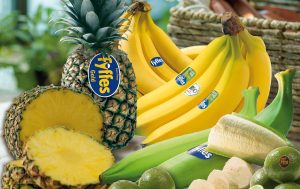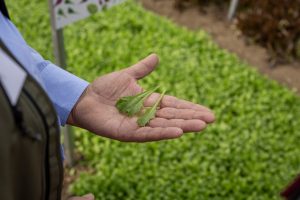It now has a name. The variety presented by Bayer at its Winter Brassicas Days has been called Suertex (SV AC7306) and it completes the Curdivex type cauliflower portfolio. An improved line of whiter cauliflowers that maintain their colour for longer in the fields and on the supermarket shelves, adapted to relatively shorter cycles and grouped harvesting.
Suertex is for a cycle of approximately 100-105 days. It is characterised by the significant hardiness of the plant and its erect bearing, with very uniform harvesting that helps to reduce labour costs, José Guirado, Market Development Brassicas Ibérica, explains.
The recommended plantation dates: for cold regions, from the end of July to the 10th-15th of August; and for the warmer Mediterranean regions, throughout September, up to the 20th of October.
Broccoli for industry
In the broccoli offer, Andersia has joined the already well-known Shard and Titanium. The variety is a leader in northern Europe and it is now being introduced to the Iberian Peninsula. It is focused on early transplanting at the end of July and August in cold areas (Extremadura and Valle del Ebro), standing out in yield and for the ease of handling the florets in industry. Along with the elevated head and very grouped harvesting that characterise Seminis’ varieties (in one cut 70% of the heads are harvested), it also provides a high yield/ha.
Since the start of its promotion in Spain, Andersia has become consolidated in industrial areas, and this year they expect a considerable growth in sales, given Andersia’s good behaviour last year, both in Extremadura and in the Valle del Ebro.
Guirado advances that they are also going to try the variety out in high areas of Murcia this year, aimed at positioning it amongst the companies devoted to crops for industry in the outlying areas of Albacete.
“We continue working to extend our broccoli and cauliflower catalogue. Our goal for the brassica improvement programme is to make the producers’ work easier: with stable cycle varieties, harvesting that is as grouped together as much as possible, adapted to potential mechanised harvesting, particularly in broccoli, but also in cauliflowers, due to their harvesting uniformity and slightly longer stalks than in conventional cauliflowers,” Guirado concludes.























